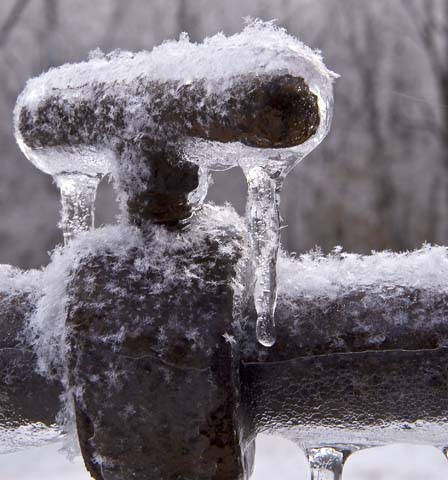Preventing Frozen Pipes in Cold Weather: Professional Strategies
Preventing Frozen Pipes in Cold Weather: Professional Strategies
Blog Article
Here further down you will discover a good deal of exceptional facts with regards to Prevent Frozen Pipes .

Cold weather can wreak havoc on your pipes, specifically by freezing pipes. Here's just how to avoid it from happening and what to do if it does.
Intro
As temperature levels decline, the danger of frozen pipelines rises, potentially bring about expensive repair services and water damages. Understanding just how to prevent frozen pipes is vital for homeowners in cold climates.
Comprehending Icy Pipelines
What causes pipelines to ice up?
Pipelines ice up when subjected to temperatures below 32 ° F (0 ° C) for expanded periods. As water inside the pipes ices up, it broadens, taxing the pipeline walls and potentially causing them to burst.
Risks and damages
Frozen pipes can bring about water supply interruptions, property damage, and expensive repair work. Burst pipelines can flooding homes and cause substantial architectural damage.
Indicators of Frozen Pipes
Recognizing frozen pipes early can stop them from rupturing.
How to recognize frozen pipelines
Try to find decreased water circulation from faucets, unusual smells or sounds from pipelines, and noticeable frost on subjected pipelines.
Prevention Tips
Protecting vulnerable pipelines
Wrap pipes in insulation sleeves or make use of warm tape to secure them from freezing temperatures. Focus on pipelines in unheated or external areas of the home.
Home heating methods
Maintain indoor spaces appropriately heated up, particularly areas with pipes. Open up closet doors to enable cozy air to flow around pipelines under sinks.
Protecting Outdoor Pipes
Yard pipes and outside taps
Disconnect and drain garden tubes before winter months. Set up frost-proof faucets or cover outside taps with insulated caps.
What to Do If Your Pipelines Freeze
Immediate activities to take
If you presume icy pipes, keep taps available to relieve stress as the ice melts. Make use of a hairdryer or towels taken in hot water to thaw pipes gradually.
Long-Term Solutions
Architectural modifications
Consider rerouting pipelines away from exterior walls or unheated locations. Include added insulation to attic rooms, cellars, and crawl spaces.
Upgrading insulation
Purchase high-grade insulation for pipes, attic rooms, and walls. Appropriate insulation aids maintain regular temperature levels and reduces the threat of frozen pipelines.
Final thought
Avoiding icy pipelines needs positive procedures and quick responses. By understanding the reasons, indicators, and preventive measures, house owners can protect their pipes throughout cold weather.
5 Ways to Prevent Frozen Pipes
Drain Outdoor Faucets and Disconnect Hoses
First, close the shut-off valve that controls the flow of water in the pipe to your outdoor faucet. Then, head outside to disconnect and drain your hose and open the outdoor faucet to allow the water to completely drain out of the line. Turn off the faucet when done. Finally, head back to the shut-off valve and drain the remaining water inside the pipe into a bucket or container. Additionally, if you have a home irrigation system, you should consider hiring an expert to clear the system of water each year.
Insulate Pipes
One of the best and most cost-effective methods for preventing frozen water pipes is to wrap your pipes with insulation. This is especially important for areas in your home that aren’t exposed to heat, such as an attic. We suggest using foam sleeves, which can typically be found at your local hardware store.
Keep Heat Running at 65
Your pipes are located inside your walls, and the temperature there is much colder than the rest of the house. To prevent your pipes from freezing, The Insurance Information Institute suggests that you keep your home heated to at least 65 degrees, even when traveling. You may want to invest in smart devices that can keep an eye on the temperature in your home while you’re away.
Leave Water Dripping
Moving water — even a small trickle — can prevent ice from forming inside your pipes. When freezing temps are imminent, start a drip of water from all faucets that serve exposed pipes. Leaving a few faucets running will also help relieve pressure inside the pipes and help prevent a rupture if the water inside freezes.
Open Cupboard Doors
Warm your kitchen and bathroom pipes by opening cupboards and vanities. You should also leave your interior doors ajar to help warm air circulate evenly throughout your home.

I was made aware of that editorial on How To Avoid Freezing Pipes through a buddy on our other web address. Don't hesitate to take the opportunity to distribute this post if you appreciated it. Many thanks for your time invested reading it.
Click Here Report this page